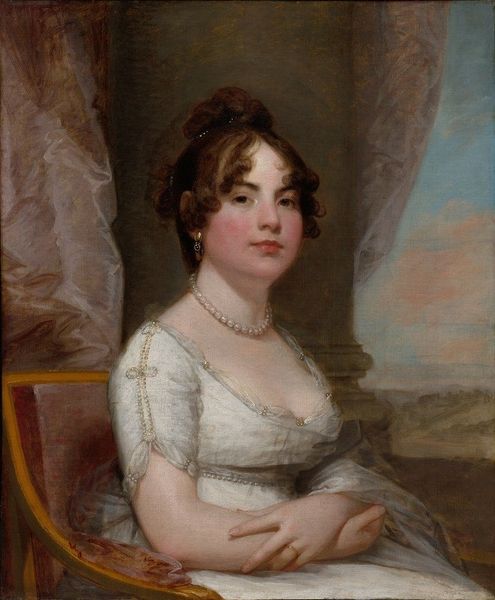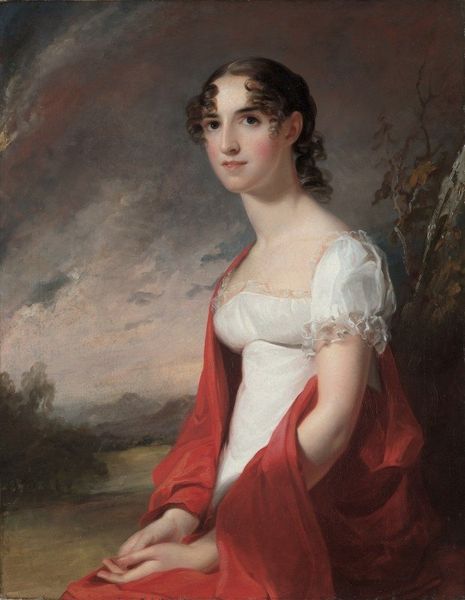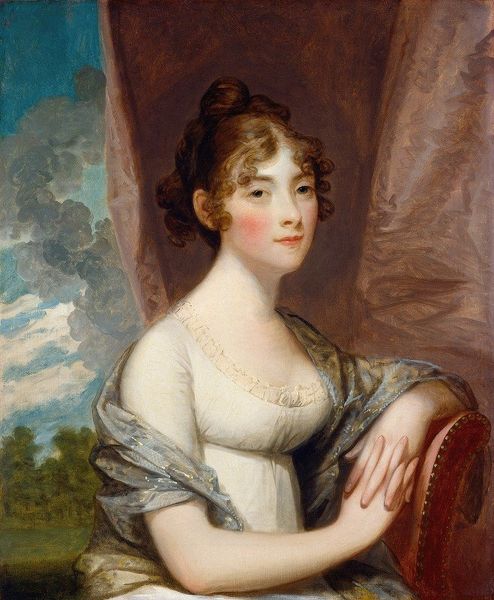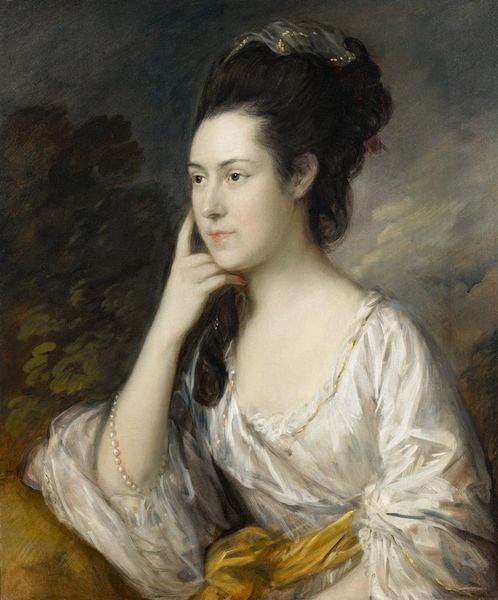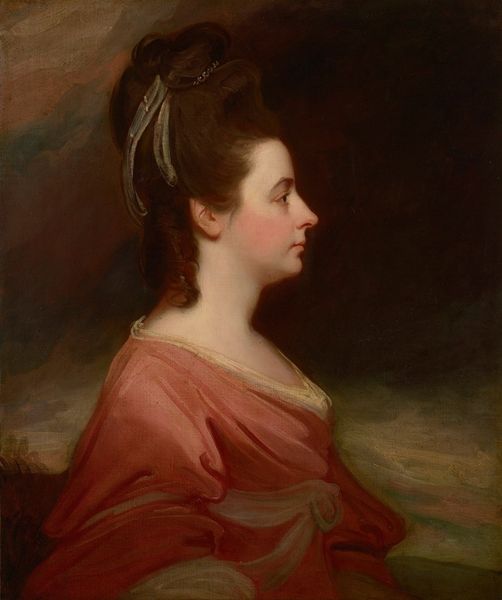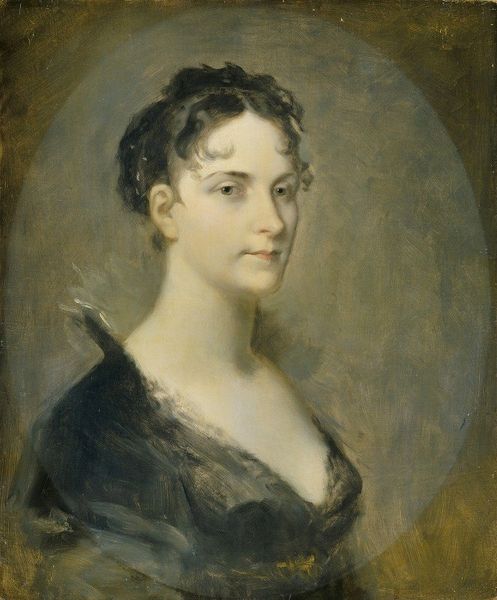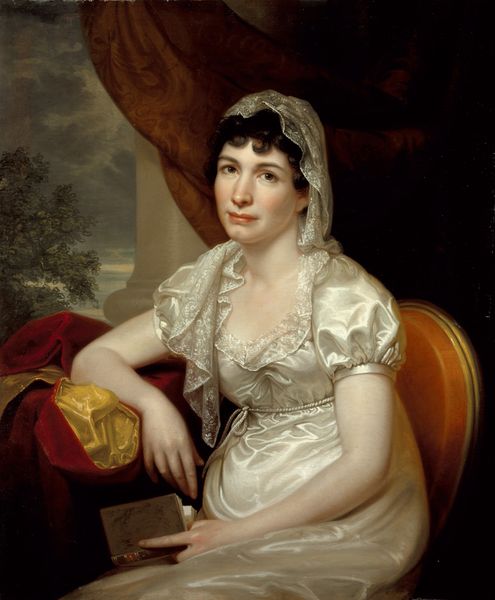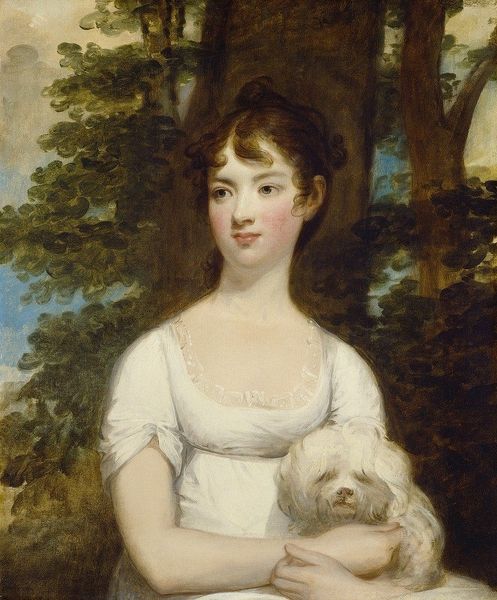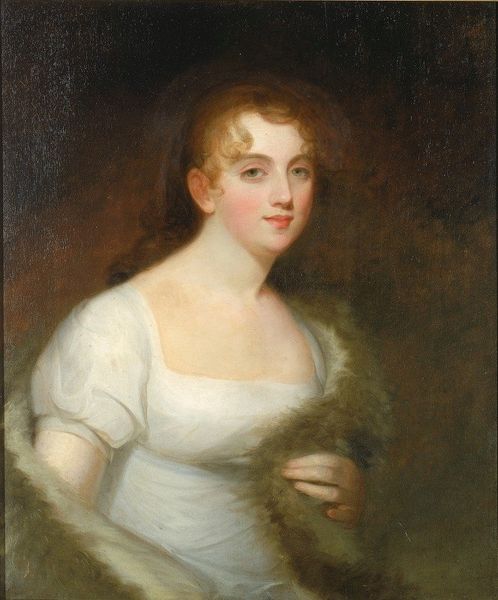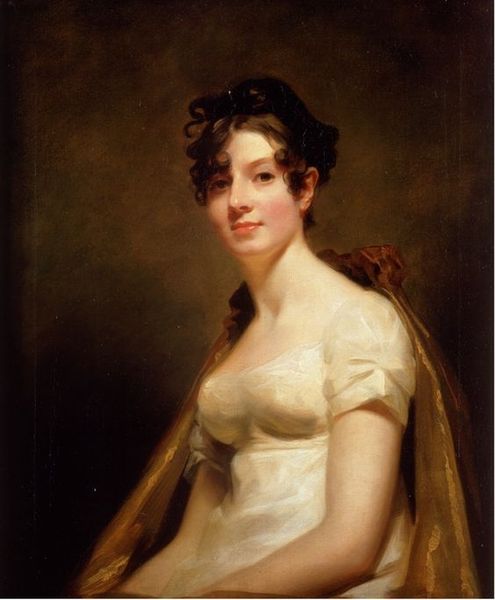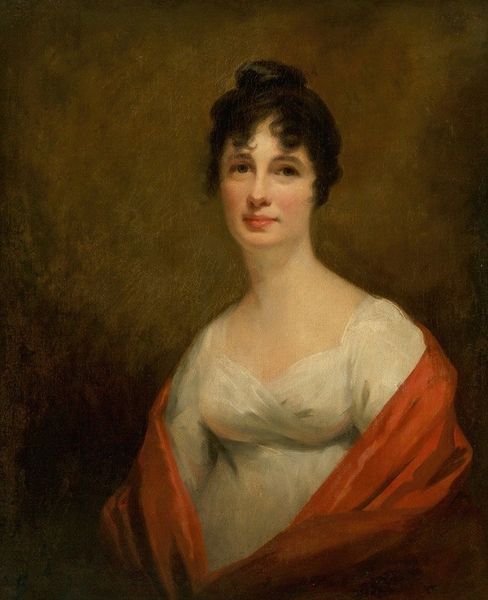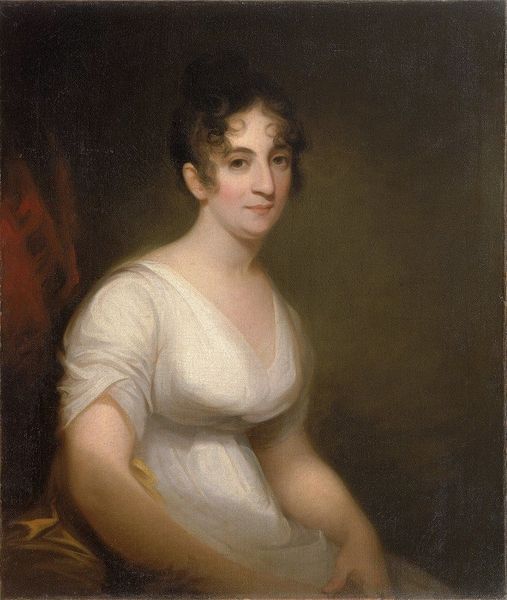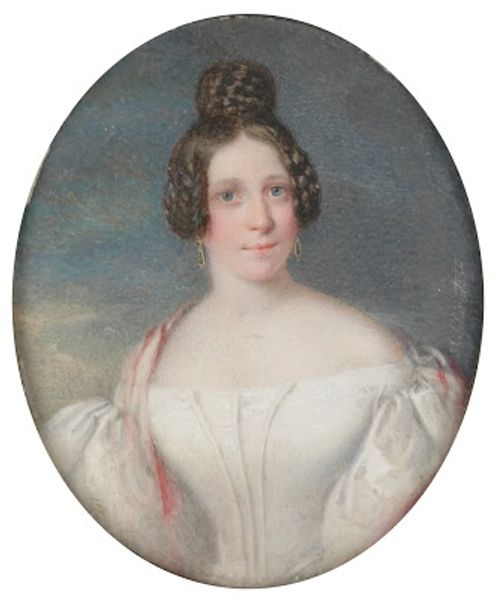
painting, oil-paint
#
portrait
#
painting
#
oil-paint
#
landscape
#
romanticism
#
history-painting
#
academic-art
Copyright: Public domain
Editor: So, this is Thomas Sully's "Mary Siddons Whelen," painted in 1812. It's an oil painting. It has a certain... dreamlike quality to it, and the landscape feels very Romantic. What do you see in this piece? Curator: Beyond its aesthetic appeal, I see a potent reflection of societal ideals regarding women during that era. The sitter, Mary Siddons Whelen, is portrayed with delicate features, soft lighting, and a serene expression, embodying the prevalent expectations of feminine virtue and passivity. It’s worth questioning who gets to be represented in art and how their stories intersect with broader social narratives. Editor: That’s a great point. The setting, this almost untouched nature, it feels symbolic. Curator: Exactly. Landscape becomes a stage for displaying Mary's perceived harmony with the natural world, reinforcing her connection to idealized femininity. It makes me consider if such depictions also confined women, subtly restricting their roles to domesticity and moral guidance. Editor: Did women have any agency in how they were portrayed at the time? Curator: To some extent, yes, especially within wealthy circles. Commissioning a portrait was a status symbol, granting the sitter a degree of control over their image. However, even within that framework, the artist, societal expectations, and prevailing aesthetics significantly influenced the final product, often reinforcing dominant ideologies. Look how Sully accentuates Mary's youth and beauty, aligning her with traditional standards, and the red robe looks expensive, indicating wealth. Editor: So it’s both a personal statement and a reflection of the constraints placed upon women? Curator: Precisely. It's a fascinating example of how art can simultaneously celebrate and subtly enforce social norms. Examining these paintings through a feminist lens allows us to unravel the complexities of identity, representation, and power dynamics in the 19th century. Editor: I'll definitely think about portraits differently now, especially in terms of power and gender. Thanks. Curator: And I’m glad that we both considered this in a new light. There is always more to discover.
Comments
No comments
Be the first to comment and join the conversation on the ultimate creative platform.
